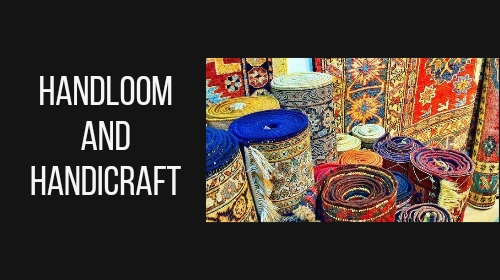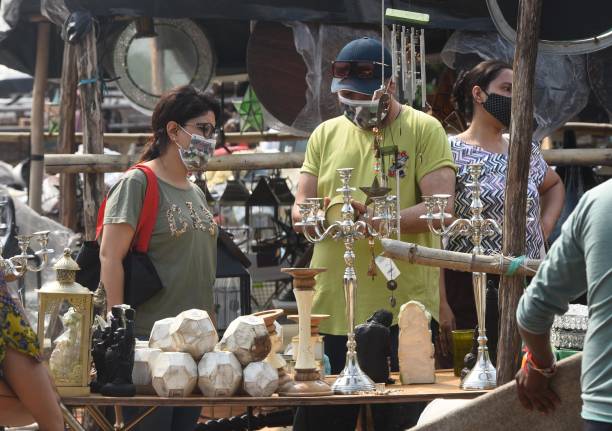Handloom and Handicraft of India is different in cultures and traditions, with each region having its own distinct handicrafts and handlooms. The intricate weaving techniques, exquisite embroidery, and delicate designs that have been passed down through generations have resulted in the rich heritage of Indian handicrafts and handlooms. These crafts not only represent India’s rich cultural heritage, but also provide a living for thousands of artisans and weavers throughout the country.

India’s Handloom and Handicraft History
The origins of Indian handicrafts and handlooms can be traced back to ancient times. Cotton cultivation is thought to have begun in the Indus Valley Civilization, and the use of cotton fabric can be traced back to 5000 BCE.
The art of weaving and dying cloth was well-established during the Mauryan Empire, and the Mughal era is remembered for its intricate embroidery and weaving techniques. The handicraft and handloom industries declined during British colonization of India, but they were revived during the Swadeshi movement in the early twentieth century.
Handloom and Handicrafts Types
India is home to a diverse range of handicrafts, each with its own distinct style and technique. Some of the most popular Indian handicrafts are:
Handloom and Handicraft – Ceramics and pottery
Pottery and ceramics have long been a part of Indian culture. Handloom and Handicraft, Pottery and ceramics are a versatile and popular handicraft, ranging from the rustic terracotta pots of rural India to the intricate designs of blue pottery.
Textiles
The textile industry is India’s oldest and most important handicraft. Each region has its own distinct textile tradition, from the soft silks of South India to the vibrant cotton fabrics of Rajasthan.
Woodwork
From the intricate wooden doors of Rajasthan to the delicate wooden toys of Channapatna, Handloom and Handicraft, India is known for its intricate woodwork. Handloom and Handicraft, Wood carving is a traditional craft that has been passed down through generations and is still alive and well in many parts of India.
Metalwork
Metalworking has been practiced in India since ancient times, with copper, brass, and bronze used in various forms of art and decoration. Metalwork is an important handicraft in India, from the intricate filigree work of Odisha to the sturdy metal utensils of Kerala.
Handloom Varieties
Handloom weaving is an ancient craft that has been practiced for centuries in India. Handloom fabrics are distinguished by their distinct texture, design, and durability. The following are some of the most popular handloom fabrics in India:
Silk from Banarasi
Banarasi silk is a luxurious handwoven fabric from Varanasi, Uttar Pradesh. It is famous for its intricate designs and beautiful embroidery.
Silk Chanderi
Chanderi silk is a lightweight handloom fabric from Madhya Pradesh. It is distinguished by its fine texture and delicate designs.
Jamdani
Jamdani is a handloom fabric that originated in Bangladesh but is now manufactured in parts of India. It is well-known for its intricate designs and light weight.
Silk from Kanchipuram
Kanchipuram silk is a handwoven fabric from Tamil Nadu. It’s famous for its bright colors and intricate designs\
Handlooms and handicrafts are an important part of Indian culture and tradition. They represent India’s rich cultural heritage and provide a living for thousands of artisans and weavers across the country. Despite any challenges, there is hope for the future, and initiatives by the Indian government, as well as growing demand for handmade products, provide opportunities for industry growth and development.








